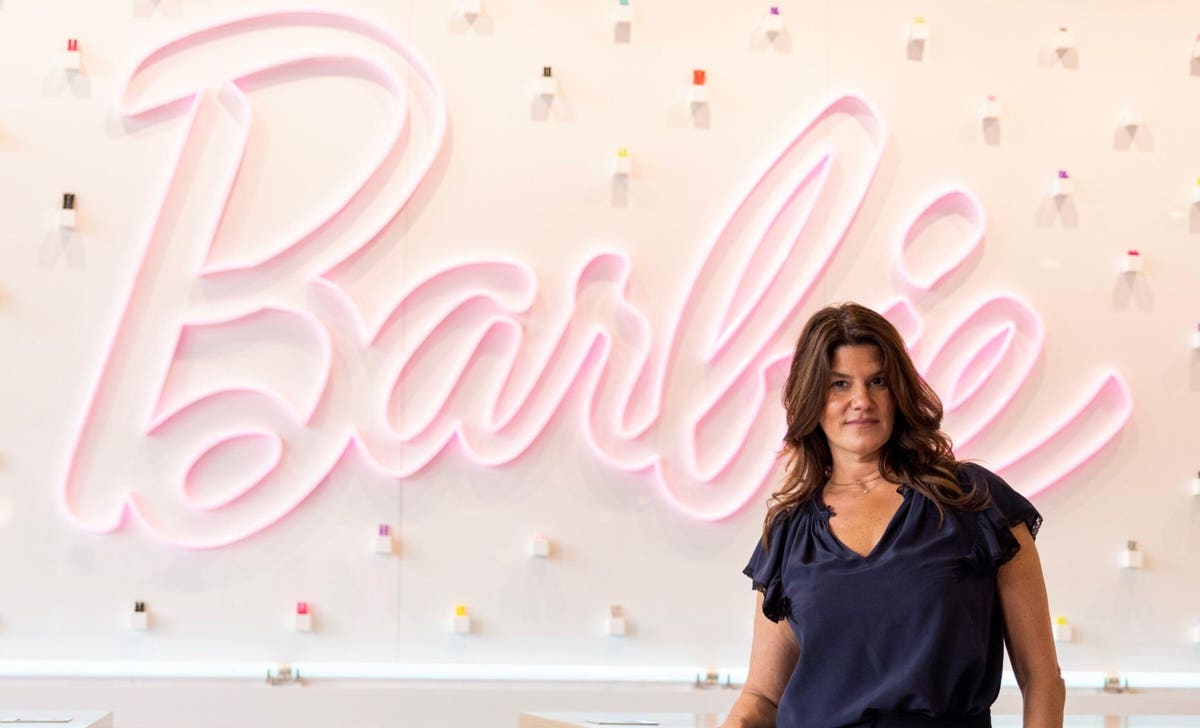There’s no shortage of coverage on Barbie’s box office dominance, the result of bold filmmaking and a marketing launch that was more of a pop culture takeover than an ad campaign. The film became the highest grossing movie of 2023, and it’s also changing the conversation around the globe about how a brand can move from consumption to conversation. “Suddenly, we’re not just a toy brand; we’re a pop culture phenomenon,” Head of Mattel Films Robbie Brenner said.
Brenner’s role is the bridge between Mattel’s lineup of toys and games and Hollywood, translating products and brands into compelling narratives. Mattel is not new at content creation, they’ve been behind a roster of film and television shows. What’s different now? The strategy, stakes, creative talent, partnerships and the investment (not just hard capital, human capital too). There are at least 45 movies being developed based on Mattel IP and it’s Brenner’s job to find a story for each of them. But she’s not playing it safe.
For Mattel Films, it’s all about breaking through and putting a mark on pop culture. “People want to see things that are disruptive and bold and different,” Brenner explains. “And if you’re not doing that, then you have no business being in the creative space.“ For Brenner, there’s a crucial strategic step between making a movie and selling dolls. It’s a strategy that includes finding stories that have meaning and that will engender brand love.
Brand leaders, who are tasked and struggle with breaking through in today’s marketing landscape, waiver between two extremes when it comes to Barbie and brand storytelling: The relevance of the Barbie movie to their brand marketing (since they don’t own comparable intellectual property) or whether their brand’s subject matter could actually enable them to pull off something like this.
It’s easy to look at Barbie and think its over $1 billion success was inevitable. But that would mean ignoring the dozens of other Barbie movies and TV shows in recent years that critics would say, with rare exception, are mostly generic brand programming.
Brenner responded, “When you have a brand like Barbie, you can’t just slap her onto a screen and expect success. You need a compelling story, a narrative that resonates. That’s what we did differently this time. It wasn’t just about putting Barbie in a movie; it was about making her a symbol for something bigger, for aspiration, for dreaming big. That’s what resonates with people.”
The movie makes some bold marketing and story choices. Depicting Mattel executives as disconnected blowhards. A trailer that proclaimed, “If you love Barbie. If you hate Barbie. This movie is for you.” It’s an approach that might have some wondering whether Barbie could be the impetus for the next step in corporate honesty and transparency. “Barbie is sort of a perfect woman,” Brenner offers. “She makes a lot of women feel bad, and we need to embrace that, and we need to embrace all aspects of it. Life is messy, life is complicated… and that’s what people want to see.”
Barbie had the IP, but it wasn’t without its challenges.
Not too recently, Barbie was languishing in cultural obsolescence and sales declines. A decade or so ago, it would be easy to make the argument that the world had moved beyond Barbie and her existential duality: A feminist icon and a symbol of outdated societal beauty norms. Double digit sales declines in the 2010s forced Mattel to pivot and a modern, diverse rendition emerged. Barbie was rescued from toy-land obscurity, but there was still sales weakness as recent as Q2 2023, which predated the film’s release.
The film’s release seems to have changed the brand’s fortunes. “It’s been a game-changer for us. Sales are up, engagement is through the roof, and, most importantly, we’ve managed to connect with a new generation,” Brenner contends.
What does this all mean? “If you’re doing something that doesn’t feel scary to you, then don’t do it. Things that are worth making feel scary and uncomfortable. And that is where amazing things happen,” Brenner concludes.
For Mattel Films, the power of storytelling is shifting perceptions and leading to purchase and it’s because, Brenner makes it clear, Barbie the brand and Barbie the movie got out of its comfort zone. Brands can’t be boring and expect to be part of the conversation.
Read the full article here





